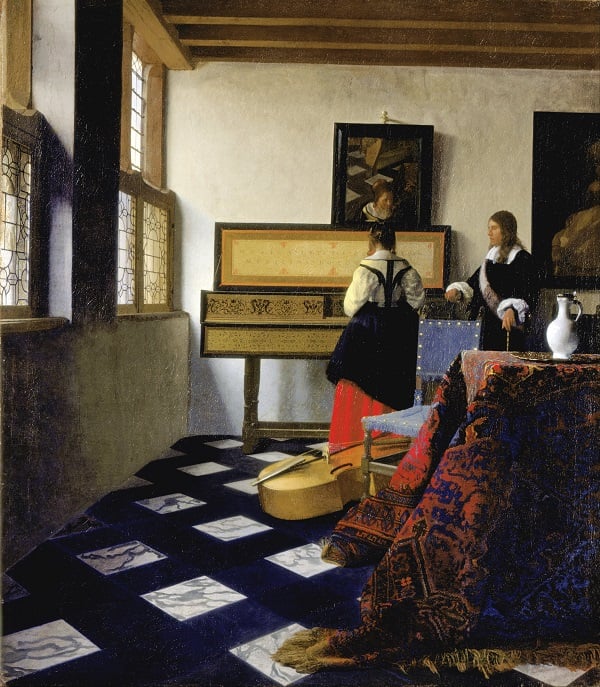
It started as a hobby, but it soon became much more. Texas-based inventor Tim Jenison’s mission was to uncover the tools and techniques that allowed Johannes Vermeer—one of history’s greatest painters—to create astonishingly realistic images 150 years before the invention of photography. What followed was Tim’s Vermeer, a documentary that chronicles his quest to recreate Vermeer’s masterpiece The Music Lesson. The documentary was produced by Teller, of magician duo Penn & Teller.
Jenison explained his hypothesis to BoingBoing thusly: “Looking at Vermeer’s paintings, it seemed to me that he must have had a way to not only trace the shapes, but capture the colors of a projected image. If he could do that, his paintings might be a form of photography, achieved not with film and chemicals, but with the human hand. Vermeer’s paintings might be 350-year-old color photographs.”
He posits that there are clues in Vermeer’s paintings that allude to this, and developed the idea that a small mirror on a stick would let you exactly match your paint colors to the colors of your subject. So, he built a full-scale replica of the room depicted in The Music Lesson and tested his theory, building everything, except for the viola and the Turkish tablecloth, by hand. The experiment took him a decade to complete.
But attempting to prove that one of art’s great masters used technology to help him paint is controversial business. According to the Huffington Post UK, the film “explores the battleground between art purists, who believe art stops being true once gadgetry is involved, and the more practical types including David Hockney, who says in the film that finding out what Vermeer did would only add to his genius.” To find out whether or not Jenison’s hypothesis is true, you’ll have to watch the film.